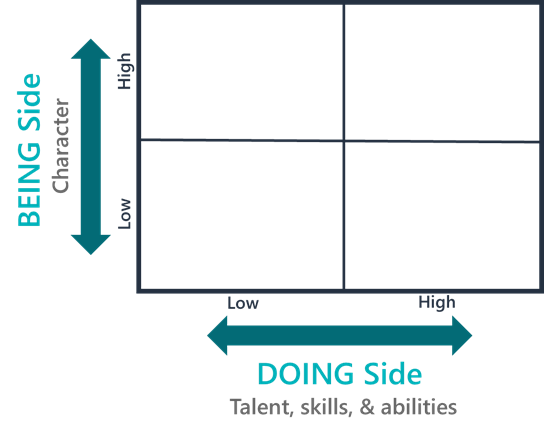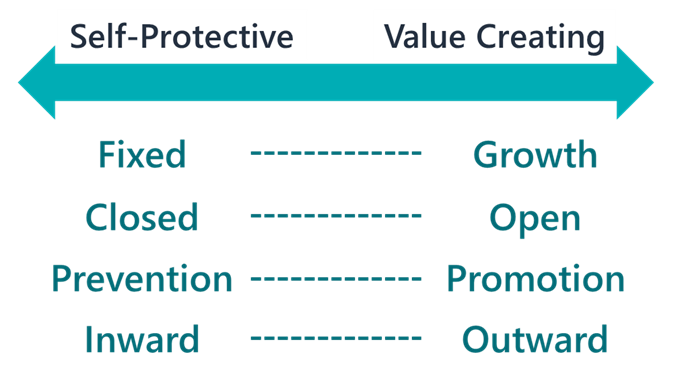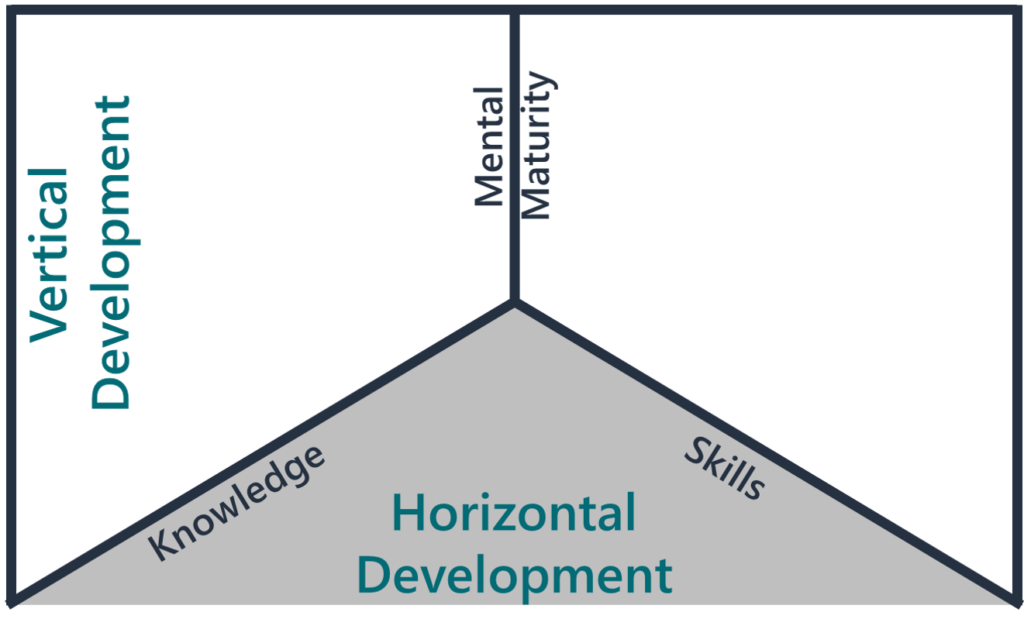Last week, I presented an idea that we have two sides of ourselves: a DOING Side and a BEING Side.

The DOING Side represents our talent, knowledge, skills, and abilities. The higher we are on the DOING Side, the more capable we will be at performing specific tasks that are aligned with our talents, knowledge, skills, and abilities. For example, a surgeon is generally someone who has a high DOING Side for performing surgeries (although may not be very good at fixing broken electronics).
The BEING Side represents our character.
But, what is character?
For me, understanding the concepts of vertical development and mindsets has helped me better understand what character is, why it is vital for effective leadership, and how to develop it. Let me explain.
What is Character?
Two answer this question, a high-level overview of vertical development and mindsets is in order.
Vertical Development
Vertical development theory has identified that:
- There are three stages of adult development
- Most adults never develop during adulthood (64% of adults never get to stage 2)
- When people operate in Stage 1, they are wired for self-protection (their bodies programmed to achieve safety, comfort, and belonging)
- When people operate in Stage 2, they are wired for self-progression (their bodies programmed to stand out, advance, and get ahead)
- When people operate in Stage 3, they are wired for value creation (their bodies programmed to contribute, add value, and lift others)
- As one progresses from Stage 1 to Stage 3, one progresses from self-protection to value creation
Mindsets
Mindset researchers have identified four sets, or pairs, of mindsets that serve as mental filters that determine our nonconscious automatic processing:
These sets, or pairs, represent a continuum ranging from self-protection to value creation.
For example, when someone has a fixed mindset, they are wired to avoid challenges as a way to protect themselves from failure and looking bad (self-protection). But, when someone has a growth mindset, they are wired to approaches challenges as a way to advance their learning, growth, and development (value creation).

Both Vertical Development & Mindsets
Vertical development stages and mindsets are two ways of evaluating the quality and level of our BEING Side, or “character.” They really have little to do with our DOING Side (other than to amplify what we get out of our DOING Side).
Thus, I believe we are now in a better position to define what “character” is.
Character is our ability to operate in value creation mode as opposed to self-protection mode. And, even further, character is our ability operate in value creation mode and stay in value creation mode amidst change, stress, pressure, uncertainty, and complexity.
A lack of character is the degree to which one operates in self-protection mode as opposed to value creation mode. And, one’s lack of character is generally exposed in times of change, stress, pressure, uncertainty, and complexity, if such situational dynamics lead to one shifting into self-protection mode.
Why is Character Vital for Effective Leadership?
One’s ability to be an effective leader and have a positive influence within their sphere of influence is directly related to the degree to which one can operate in value creation mode.
Too often, the people we find in leadership positions are people who are high in their DOING Side (such is often a prerequisite for being placed into a leadership position), but who are lacking in their BEING Side.
When we find leaders who are high in their DOING Side and lower in their BEING Side, we can find a certain degree of success, but we can also find a certain degree of failures. For example, consider:
- Travis Kalanick (former CEO of Uber)
- Bobby Knight (former coach of Indiana University’s basketball team)
- Elon Musk (current CEO of X)
- Elizabeth Holmes (former CEO of Theranos)
- Sam Bankman-Fried (founder of FTX)
- Carly Fiorina (former CEO of Hewlett-Packard)
- Kenneth Lay (former CEO of Enron).
These are all examples of leaders with a high degree of talent, but were also lacking in character.
If we want to be an effective leader, we need character. We need to be high on our BEING Side.
How Can We Develop Character?
The vast majority of leadership development focuses on a form of development that exclusively focuses on our DOING Side. It is called Horizontal Development.

If we want to elevate on our BEING Side (i.e., our character), we need a different form of development: Vertical Development.
Vertical Development is not about improving our knowledge, skills, and abilities. Instead, Vertical Development is about improving our internal operating system. It requires that we refine and upgrade our neurology to the degree that we make shifts away from being wired for self-protection and toward being wired for value creation (i.e., we level up in the vertical development stages and develop more growth, open, promotion, and outward mindsets).
And, as we improve our neurology, we enhance our character.
Now Introspect
With this seemingly new perspective on character, here are some questions for you to consider:
- Do you know the degree to which you are wired for self-protection versus value creation? (Personally, the connection between vertical development/mindsets and character has helped me to see that I have less character than I had previously assumed.)
- To what degree are you focused on rewiring your internal operating system for value creation (i.e., greater character)?
- To what degree are you supporting the character development (i.e., vertical development) of your leaders and employees?
If you would like to bring more character development (i.e., vertical development) into your development efforts, let’s connect.










